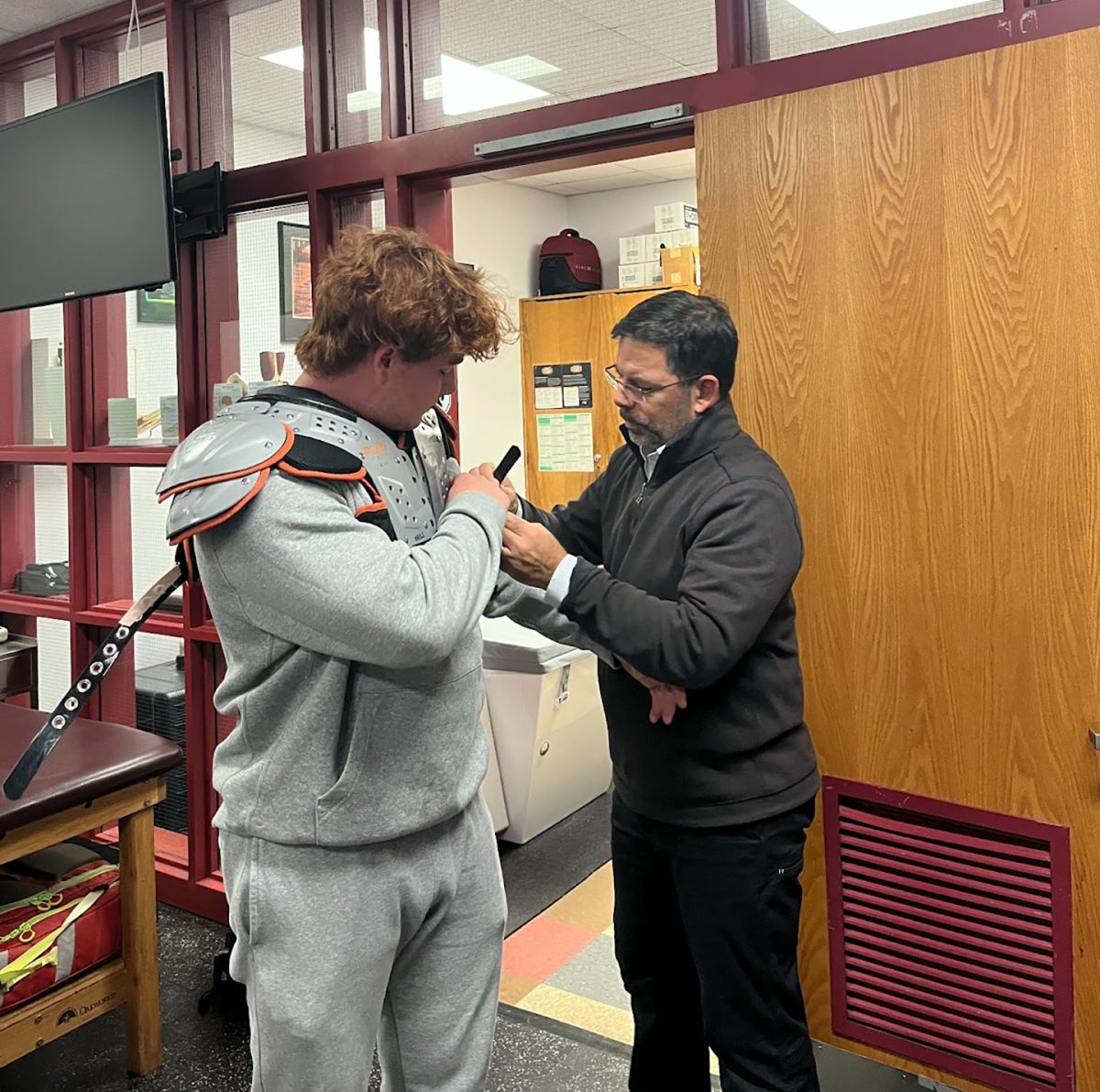Sports teams at WHS have become a large part of the culture of the school. However, it can be easy for many to overlook the possible dangers that participating in athletics can entail if not performed with the right safety precautions. Student-athletes can put themselves at a disadvantage and endanger their chances of participating in their chosen sport in the years to come if they play without properly preparing their minds and bodies.
The most common risk seen with participating in sports is physical injuries whether they happen on the playing field or from the intense hours of practice contributing to overuse injuries.
“[Some athletes are] not taking breaks in their recovery and they end up getting stress syndromes,” said athletic trainer Andrew Rizza. “It could be anywhere from bone-related or soft-tissue related to compartmental [muscle] syndromes.”
It is not surprising that some injured athletes avoid taking the breaks Rizza recommends as being removed from an activity that normally fills the week with practices and competition can have a great impact, especially when the average high school sports season only lasts for three months.
Junior quarterback Cam Cort understands this impact all too well; he injured his ACL while playing football, and his recovery meant that he was out for the remainder of the season.
“It’s pretty heartbreaking and it’s definitely not something that you want to happen to yourself or anyone else,” said Cort.
Apart from the physical pain, injury can lead to mental frustration with not being able to participate with the team. Senior Alessandra Gavris’ long road to recovery from her tibial stress fracture changed her mindset and has motivated her to get back to running.
“I know some people when they get injured it kind of makes them upset at the sport and that causes even more pain,” Gavris said. “I’ve had my moments like that, but I think overall it’s made me want to run even more.”
Playing their respective sports without caution can create the possibility for injury, but there are other external stressors that student-athletes experience that can also cause them to struggle on the field or court.
“I’ve got to believe that for some there are pressures from home to do well not only in school, but on the athletic field,” said athletic director Michael McGrath. “There’s also pressure from fellow classmates to represent the school well, to succeed, and to make sure you go out there and give it your all.”
With the many hours of academics and sports required for success in both realms, students often don’t prioritize taking care of their bodies, which is another component that can lead to injury.
“If you’re getting under eight hours [of sleep] a night, your body can’t heal, so you don’t have the recovery that’s required for you to be able to perform at the higher level,” Rizza said. “I think the main factors [causing injuries] would probably be nutrition, sleep, and then multi-sport athletes without recovery.”
Some elite high school athletes also stretch themselves by participating on both school and club teams.
“They constantly are going to a clinic, going to club sports, and when they make their way back to Weston High School you can see it feels more like a job than what they want to do,” McGrath said.
Some athletes have learned important lessons about how to balance the demands on their bodies and time.
“I had expectations, and I think it was important for me to slow down a bit to get myself in the right mentality and reduce the pressure,” Gavris said.
Being prepared before starting immediate exercise and breaking a sweat is a crucial factor in injury prevention.
“If you need to take 10 extra minutes to warm up properly, then do it,” Gavris said. “If that’s going to be the difference between you having a safe practice, meet, or game, I think it’s worth it.”
While staying in shape is key to lowering the risk of an injury incident, that preparation doesn’t have to be arduous to be effective.
“I would say do what you like to do and don’t just do something because you think it’s going to get you in shape,” Rizza said. “You could just go for walks every day and do hills on a treadmill and get in shape.”
In spite of all the risks players face, athletics can bring a lot of benefits to their lives. They can lead to many opportunities as long as athletes participate in them cautiously and mindfully.
“Play as long as you can because every moment matters, and don’t take anything for granted since you never know when it could be your last,” senior Brady Jacobson said.



